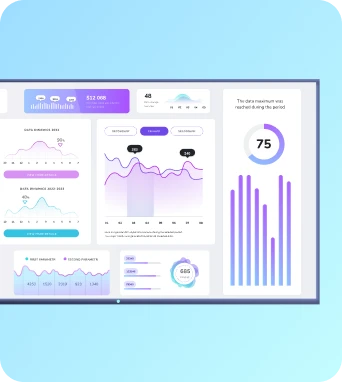Auto-refresh displays
Auto-refresh displays automatically update content on digital signage according to scheduled intervals, data feed changes or remote triggers, reducing manual intervention. They ensure TV dashboards and workplace displays reflect live metrics, news or alerts by using polling, webhooks and intelligent caching to balance timeliness with reliability and network load.
Auto-refresh displays
How auto-refresh works and technical approaches
Auto-refresh relies on three common technical approaches: scheduled polling, event-driven push and incremental content checks. Scheduled polling instructs the player to request content or resource changes at fixed intervals, which is simple to implement and predictable for bandwidth planning. Event-driven push uses webhooks or cloud push notifications to inform devices immediately when content changes, reducing latency and unnecessary network traffic. Incremental checks combine both ideas, asking the server whether content has changed via lightweight HEAD requests or ETag comparisons before downloading full resources, saving time and data when nothing has changed. From the device perspective, a resilient auto-refresh system includes retry logic, jitter to avoid simultaneous requests across many devices, and configurable backoff to cope with network congestion. Caching is also critical: players should store recently used assets and validate freshness rather than re-download everything, which keeps displays responsive and reduces service load. For feed-based content such as RSS, JSON APIs or Google Sheets, parsing and validation layers ensure malformed data does not interrupt playback. Administrators often set separate refresh rules for different content types: live metrics and alerts refresh more frequently, while static images or approved slides refresh rarely. Integrations with Fugo’s management tools expose these settings centrally, allowing operators to tailor behaviour per screen group and monitor refresh success and failures through logs and health checks.
Configuring, optimising and troubleshooting refresh behaviour
Effective configuration begins with mapping content criticality to refresh frequency. Decide which tiles or playlists require near real-time updates and which are tolerant of delays; set shorter polling for dashboards and longer intervals for promotional slides. Use push notifications where available to lower latency without increasing network load, particularly for high-priority alerts. When configuring players, enable exponential backoff after repeated failures and a small random offset to scheduled refreshes so many devices do not overload servers simultaneously. Also define content validation rules: require a complete payload signature or checksum before switching displays to prevent partial renders. Troubleshooting focuses on observability and graceful degradation. Monitor connection metrics, refresh latency, HTTP status codes and cache hit ratios to identify bottlenecks. If displays show stale content, confirm device clock synchronisation, DNS resolution and that HTTPS certificates for data endpoints are valid. Where intermittent network issues occur, configure players to fall back to cached content and to show a status tile indicating the last successful update time. For large installations, simulate peak refresh traffic to ensure backend APIs scale and apply rate limiting to protect real-time systems. In Fugo environments, leverage remote device logs and grouped settings to roll out changes progressively, test on a subset of screens and validate performance before organisation-wide adjustments, reducing disruption and ensuring display continuity.
Enabling and configuring auto-refresh on displays
Keep the learning going...
Auto-brightness adjustment
Auto-brightness adjustment automatically varies a display's luminance in response to ambient light measurements, schedules and policy rules. In digital signage deployments it preserves legibility, reduces energy use and extends screen lifetime by dimming or brightening devices to suit viewing conditions while remaining compatible with content priorities and device management systems.
Auto-orientation displays
Auto-orientation displays are digital signage screens and TV dashboards that automatically detect and switch between portrait and landscape modes, adapting layout and assets so content remains correctly framed. They simplify management across mixed-orientation networks, reduce manual configuration, and ensure media appears as intended on devices managed through platforms like Fugo.ai.
Auto-scaling signage networks
A networked digital signage system that automatically adjusts compute, bandwidth, and content delivery across displays in real time to match demand and maintain performance.



